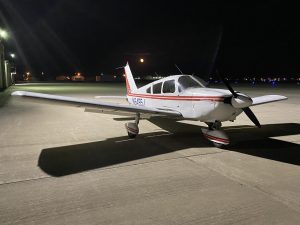Night flying in General Aviation presents unique challenges for pilots, demanding heightened awareness and meticulous planning. Flight following, a crucial service provided by air traffic control (ATC), becomes an indispensable tool for ensuring safety during these nighttime excursions.
The Importance of Flight Following at Night
Flight following, also known as radar contact, provides pilots with continuous monitoring and advisory services from ATC. This service is particularly critical during nighttime operations for several reasons:
- Reduced Visual Cues: At night, visual references are significantly diminished. Pilots rely heavily on instruments, and flight following provides an extra layer of situational awareness. ATC can alert pilots to potential traffic conflicts, hazardous weather, or terrain obstructions that may be difficult to distinguish in the darkness.
- Increased Risk of Spatial Disorientation: The lack of visual cues can lead to spatial disorientation, a dangerous condition where pilots lose their sense of orientation. Flight following can help mitigate this risk by providing radar-based position information and guidance.
- Enhanced Communication: Nighttime operations often occur in remote or rural areas with limited communication infrastructure. ATC acts as a central communication hub, relaying critical information and coordinating with other agencies as needed.
- Emergency Assistance: In the event of an emergency, flight following enables ATC to quickly locate and assist the aircraft.

